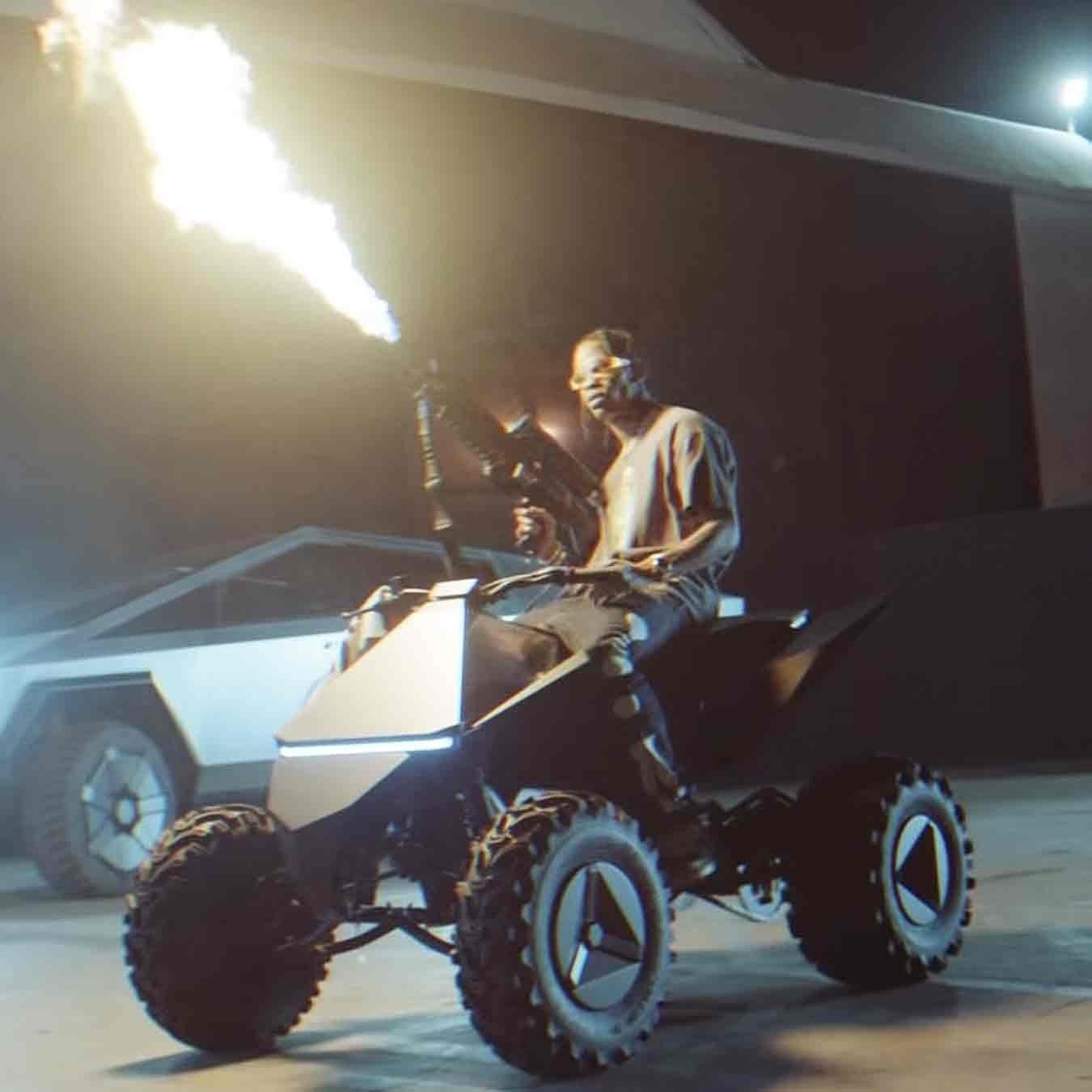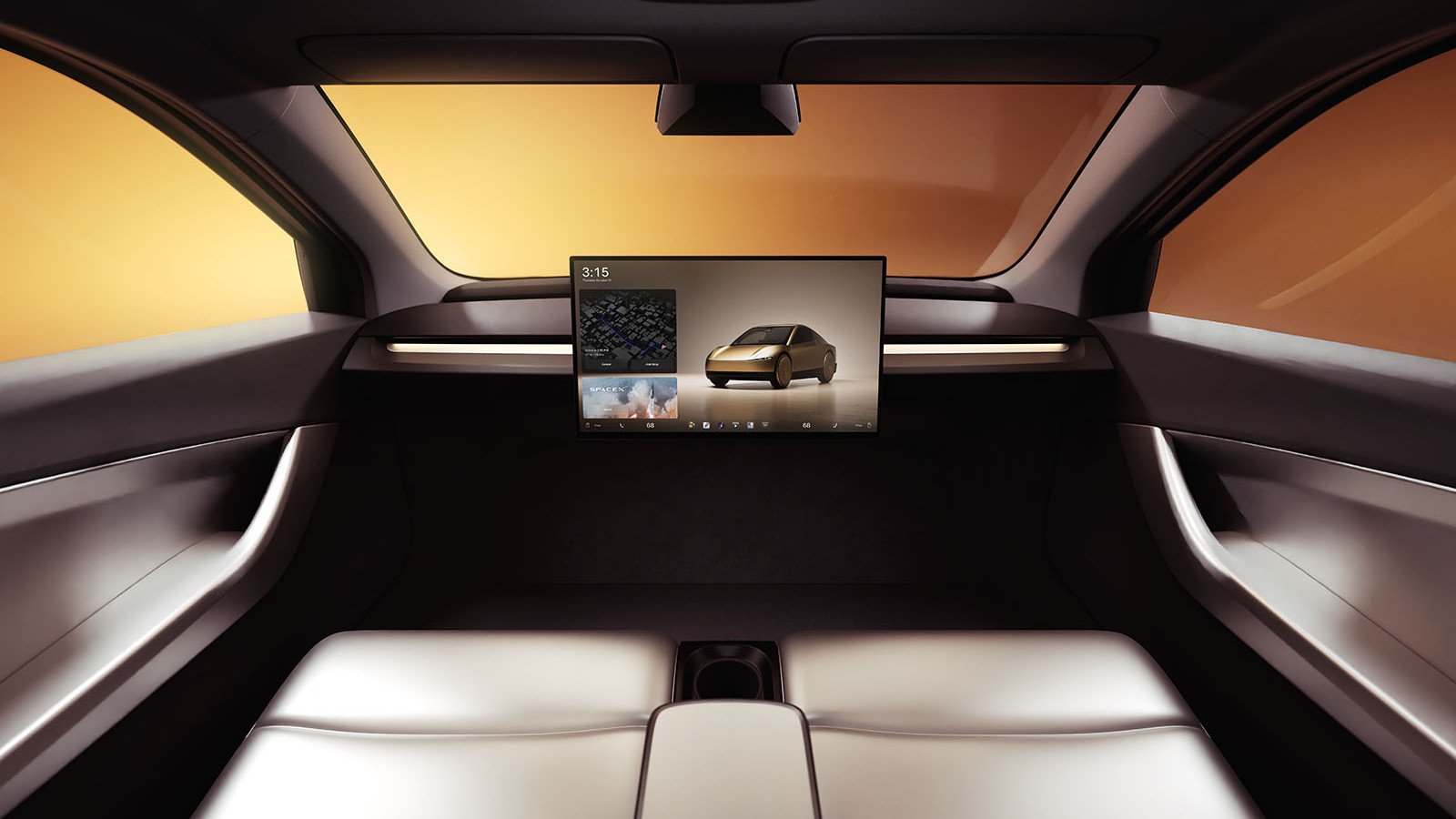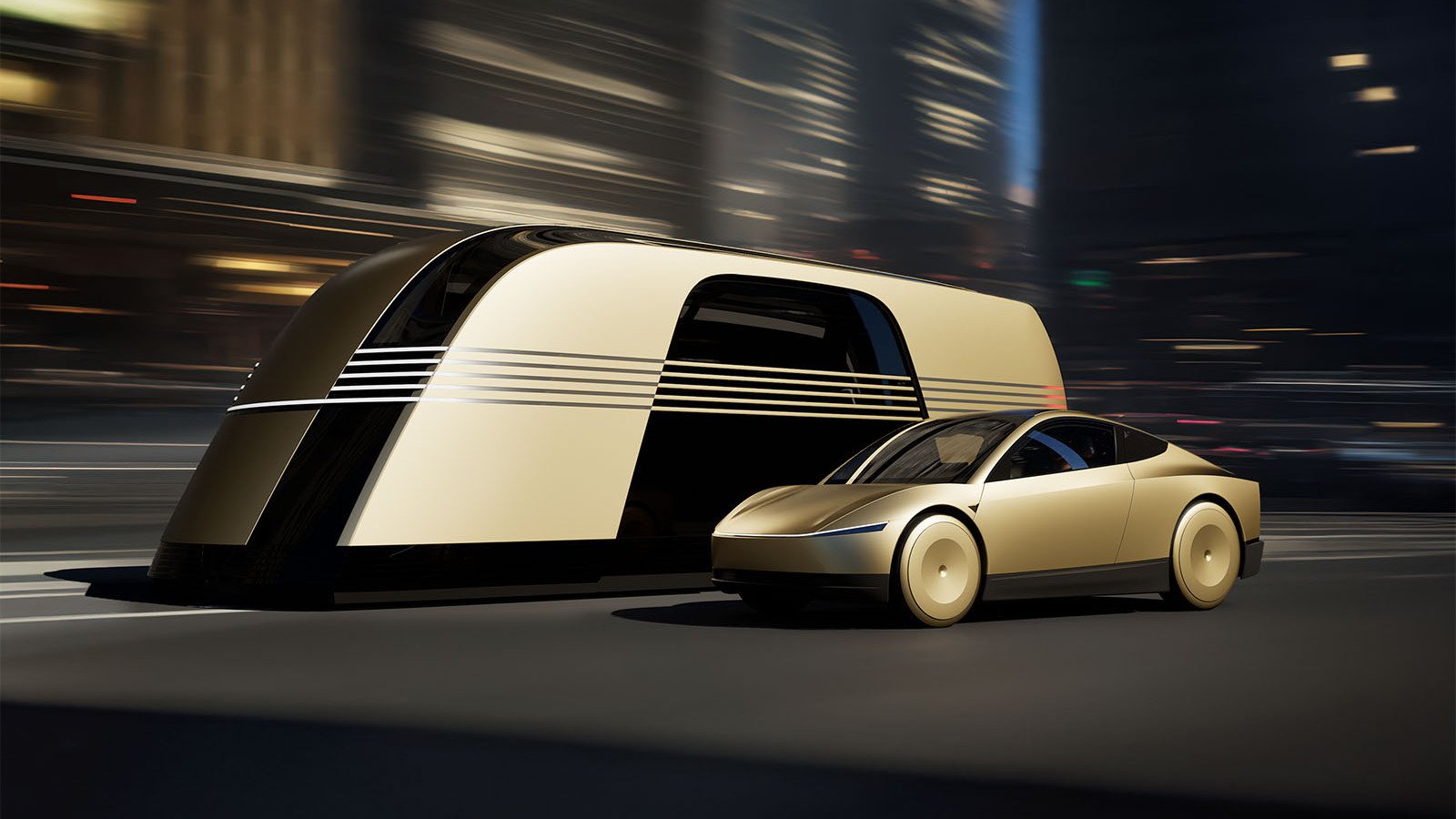AUTOMATING HUMANITY

APRIL 15 2023
Header image by Tesla
Technology and transportation have long been intertwined, but today they are more connected and intelligent than ever. Vehicles have evolved into mobile computers on wheels, capable of performing tasks once limited to our smartphones and laptops. Humans' natural desire is to look for convenience, always seeking to make life easier and less cumbersome. Today's trend of innovation aims at making our lives easier and less tedious.

Tesla Model X with its distinctive falcon-wing doors at sunset
Tesla, one of the most iconic companies of our time, has transcended the automotive industry by developing and producing fully electric cars. Their standout feature, Autopilot, continues to captivate the world and sets them apart from traditional car manufacturers. This cutting-edge technology combined sleek designs has played a pivotal role in propelling Tesla to become the world's best-selling electric vehicle company.
Tesla Robotaxi Unveiling Event
In October 2024, at a much-hyped event in Los Angeles Tesla, under the leadership of the polarising Elon Musk, unveiled groundbreaking innovations: the Robotaxi, the Robovan and a humanoïd robot called Optimus. The first two vehicles are fully autonomous, with no driver or controls, allowing passengers to simply sit back and be transported from point A to point B. The Optimus is a robot designed to automate repetitive, physical tasks in domestic settings and can act as a babysitter, a teacher or a gardener. This bold move signalled Tesla's commitment to expanding its vision into public transportation and revolutionising the way we move.
But, this shift towards automation also raises critical questions about its broader impact—particularly on jobs tied to driving—and the social implications of a world increasingly dependent on autonomous technology. It highlights the complex interplay between technological progress, labour, and the ethical dimensions of automation.
Tesla's Evolution: From Niche Player to Global Electric Vehicle Leader
Contrary to popular belief, Elon Musk didn't found Tesla. The car manufacturer was established in 2003 by two American engineers, Martin Ebenhard and Marc Tapenning, in San Carlos California. Musk joined the board a year later as chairman before becoming CEO in 2008. Tesla's real growth began in the early 2010s when they went public, opening their shares of stock to the general public and fueling its expansion.
Furthermore, the Model S made a sensation thanks to its sleek and Porsche like design. Beyond being an electric sedan, the Tesla model S stood out for their impressive 0-to-60 acceleration and their large touchscreen, which replaced the traditional dashboard. In the early 2010s, electric vehicles were far from mainstream due to limited driving range and the scarcity of charging stations. However, Tesla developed an extensive network of Superchargers, aiming to make charging significantly more affordable than gasoline. Over the years, charging a car has become more convenient as cities and highways added stations and car batteries became more advanced and efficient.
Tesla Model S Features and Performance
Then, Tesla stunned the world by introducing Full Self-Driving (FSD) technology—a bold move that promised autonomous driving capabilities and marked a major turning point in EV innovation. This feature was revolutionary, capturing global attention and pushing the boundaries of what was possible in automotive tech. Unlike traditional driver-assist features, FSD aimed to bring full autonomy to the driving experience, with the car capable of navigating complex roads, changing lanes, recognizing traffic signals, and even parking itself—all with minimal human input.
Fast forward to 2016, Musk announced a smaller and cheaper version of their staple product, the Model 3. This more affordable model aimed at appealing to the masses and popularised the concept of EV.

Kanye West, Elon Musk, Travis Scott, and Quavo during the Kardashian Christmas Eve party in 2019
On another hand, Tesla made EVs cool. Without spending a dime on advertising, the company built a reputation and reached the masses through other means. Hip Hop and pop culture embraced their cars, even during a time when production challenges made them harder to get. Chances are, your favourite rapper has dropped a lyric about Tesla or been seen driving one. From Ye to Jaden Smith to Future to Travis Scott, many high-profile artists have been seen driving a Tesla, featuring one in their music video or rapping about it.
On its way to the top, Tesla expanded into nearly every vehicle category, tailoring models for diverse needs. In 2015, Tesla launched the Model X, a luxurious, all-electric SUV featuring distinctive falcon-wing doors, impressive range, and acceleration—redefining what an electric SUV could be. In 2020, Tesla released the Model Y, a compact crossover that combined the space of an SUV with the agility of a smaller vehicle, appealing to a wider audience with its versatility and affordability. By diversifying its lineup, Tesla positioned itself as a leader in electric mobility, offering options for nearly every driver.

Travis Scott riding a Tesla Cyberquad ATV
Tesla took things to the next level by unveiling the Cybertruck, propelling the brand into an entirely new realm of innovation and cultural impact. This behemoth of a vehicle can be seen everywhere online or in major cities like New York or Los Angeles.
Tesla's Disruption of Public Transportation: A Vision for an Autonomous Future
At its latest event, Tesla unveiled a suite of groundbreaking innovations aimed at reshaping the future of public transportation. Leading the lineup was the RoboTaxi, an autonomous vehicle designed to operate without a human driver, offering a glimpse into a world of fully automated urban transit. Alongside it, Tesla introduced the Cybervan, a multi-purpose vehicle tailored for urban mobility and shared transit, promising a more sustainable alternative to traditional public transport. Additionally, Tesla showcased Optimus, its humanoid robot envisioned to assist in various everyday tasks, reflecting the company's ambition to integrate robotics seamlessly into daily life.
As Tesla ventures into the public transportation sector, it stands poised to become a direct competitor to traditional modes like taxis and ride-sharing services such as Uber. In essence, Tesla's push towards automated cars and new transportation solutions could have widespread consequences. By minimizing the need for human drivers, it could reduce job opportunities in urban areas, particularly for those who rely on driving for a living. Critics argue that although automated vehicles could make our lives more efficient by freeing up time, they might also strip away the social interactions that come with having a human driver. For many, driving isn't merely a routine task—it's a form of leisure or even a hobby. Consequently, Tesla's vision may face resistance, as some will continue to prefer traditional driving as a fulfilling activity.

Tesla RoboTaxi interior showing the minimalist design with no steering wheel
Moreover, not everyone can afford a Tesla, and for some, driving is still a passion, with sports like Formula 1 embodying this love for being behind the wheel. This adds to the complexity of a world where technology increasingly aims to replace human tasks. Just as washing machines have liberated us from hand-washing clothes, and messaging apps have replaced handwritten letters, Tesla's autonomous cars signal a broader trend towards convenience and automation.
Humans, inherently, are always looking for easier ways to navigate daily life. Technology has evolved to assist us at every turn—cooking, cleaning, even communicating. The advent of robots and automation hints at a future where a "home robot" could manage everything from cooking and cleaning to making drinks and telling jokes. Tesla's development in automated transit reflects this trend, offering a glimpse into a world where even taxis might one day be entirely autonomous.
Tesla has a unique opportunity to thrive in North America, where regulations around innovation are relatively relaxed, and the consumer market is more open to adopting new technology. Just as Ford's F-150 pickup truck remains a staple for many Americans, Tesla's autonomous vehicles could become an iconic representation of American innovation—something that might face cultural and regulatory hurdles in other regions, such as Europe.

Tesla's Optimus humanoid robot working in a factory setting
However, as cities begin to adopt these autonomous vehicles, they will also have to rethink infrastructure and urban design. Tesla envisions its RoboTaxis as more than just vehicles; Elon Musk has compared sitting in a Tesla RoboTaxi to lounging in a comfortable space that transports you seamlessly from point A to point B. This vision implies that cities may eventually transform areas traditionally used for parking lots into green spaces or parks, as the need for extensive parking diminishes. By redesigning urban environments, municipalities could integrate Tesla's automated transit into a cohesive, enjoyable experience for passengers, fundamentally changing how people interact with their city landscapes.
In markets without the necessary infrastructure, like parts of Africa, the rollout of autonomous vehicles will be challenging. Yet, Tesla's advancements contribute to what seems to be an inevitable future—a world where robots play a dominant role in transport and daily life. The slogan, "WeRobot," underscores Tesla's ambition not only to innovate but to redefine the present and envision a robot-centric future, evoking comparisons to the iconic dystopian movie I, Robot.

Tesla Robotaxi and Cybervan concept vehicles
Elon Musk has hinted that autonomous RoboTaxis will be cheaper than traditional buses in the long run, costing around 20 cents per mile, compared to the higher costs of taxis and city buses. This shift towards individualized mass transit could redefine transportation, making mobility more accessible and tailored.
Tesla's vision is bold, and its journey towards a robot-empowered society will be watched closely. As this vision unfolds, it challenges us to rethink our relationship with technology and how it shapes our lives. Will we embrace a future where robots not only drive us but reshape the very cities we live in?